Search Images
Browse Content (p. 1639)
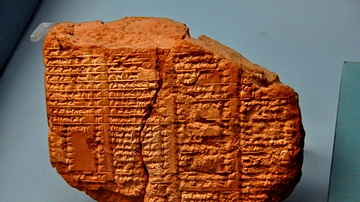
Image
Assyrian King List
This terracotta clay tablet lists the names of Assyrian kings. From Assur (modern Qal'at Sharqat, Salah Al-Din Governorate, Iraq), Mesopotamia. Neo-Assyrian era, 7th century BCE. (Istanbul Archeological Museums/Ancient Orient Museum, Istanbul...

Image
A Jar from the Jemdet Nasr Period
This painted jar dates back to the Jemdet Nasr period, 3100-2900 BCE. The jar displays geometric grey and red motifs. (The Sulaimaniya Museum, Iraq).
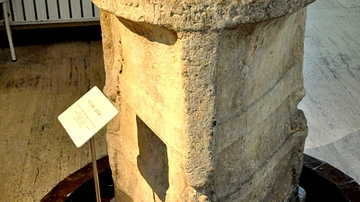
Image
An Altar from Dur-Sharrukin
This limestone altar was dedicated to the temple of the god Sibitti by the Assyrian King Sargon II. From Dur-Sharrukin (modern Khorsabad, Ninawa Governorate, Iraq), Mesopotamia. Neo-Assyrian era, 721-705 BCE. (Istanbul Archeological Museums/Ancient...
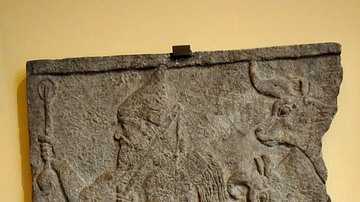
Image
A Wall Relief from Tiglath-Pileser III's Palace
A man holds a mace and a bow and a number of cows appear behind him. The name of the man is unknown. A fragment of a limestone wall relief from the palace of Tiglath-pileser III at Nimrud (ancient Kalhu; Biblical Calah). Neo-Assyrian era...
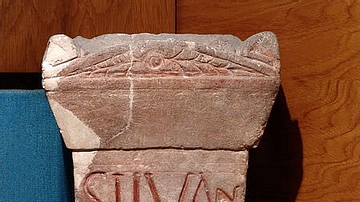
Image
Roman Dacian Inscription
This is an altar with a votive inscription in Latin from the city of Cluj-Napoca, which is in present-day Romania (Roman Dacia). The altar dates to c. 101-150 CE. height: 45 cm width: 24 cm depth: 19.5 cm letter size: 6-2 cm Transcription...
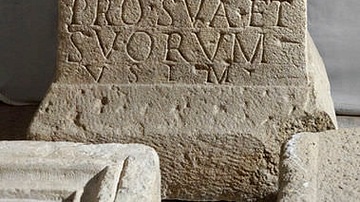
Image
Dacian Altar Piece
This is an ancient Roman altar piece — in votive style — to Publius Aelius Marcianus, who was of the decurial order and a holder of higher local offices in Napoca (a city in Roman Dacia). Today, Napoca is Cluj-Napoca, Romania. This lovely...
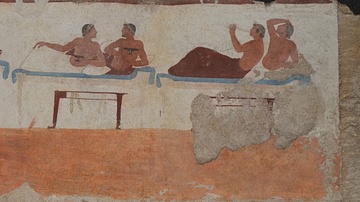
Image
Paestum Painting, Scene from a Symposium
Detail from lateral walls of the Tomb of the Diver depicting a symposium scene. The frescoes are painted on limestone slabs and are dated about 480-470 BCE. National Museum of Paestum, Italy.
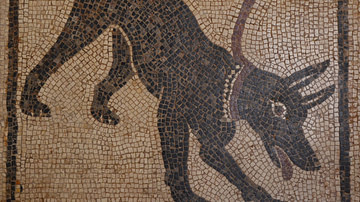
Image
Cave Cavem mosaic from Pompeii
Cave Cavem mosaic from Pompeii. It is on display at the Naples National Archaeological Museum.
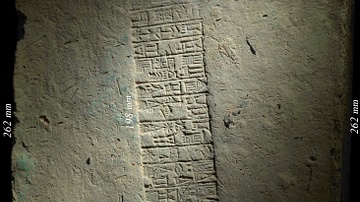
Image
Brick of Amar-Suen
This is an inscribed sun-dried brick used in temple construction. It was commissioned by the Sumerian king Amar-Suen (reigned c. 2094-2038 BCE) of the Third Dynasty of Ur. Translation of the inscription: Amar-Suen, the one called by (the...
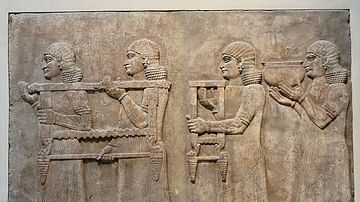
Image
Servants at Dur-Sharukkin (Khorsabad)
A relief of servants from the palace of Sargon II at Dur-Sharrukin (present-day Khorsabad, Iraq), c. 713-716 BCE. Now in the Musee du Louvre, Paris.